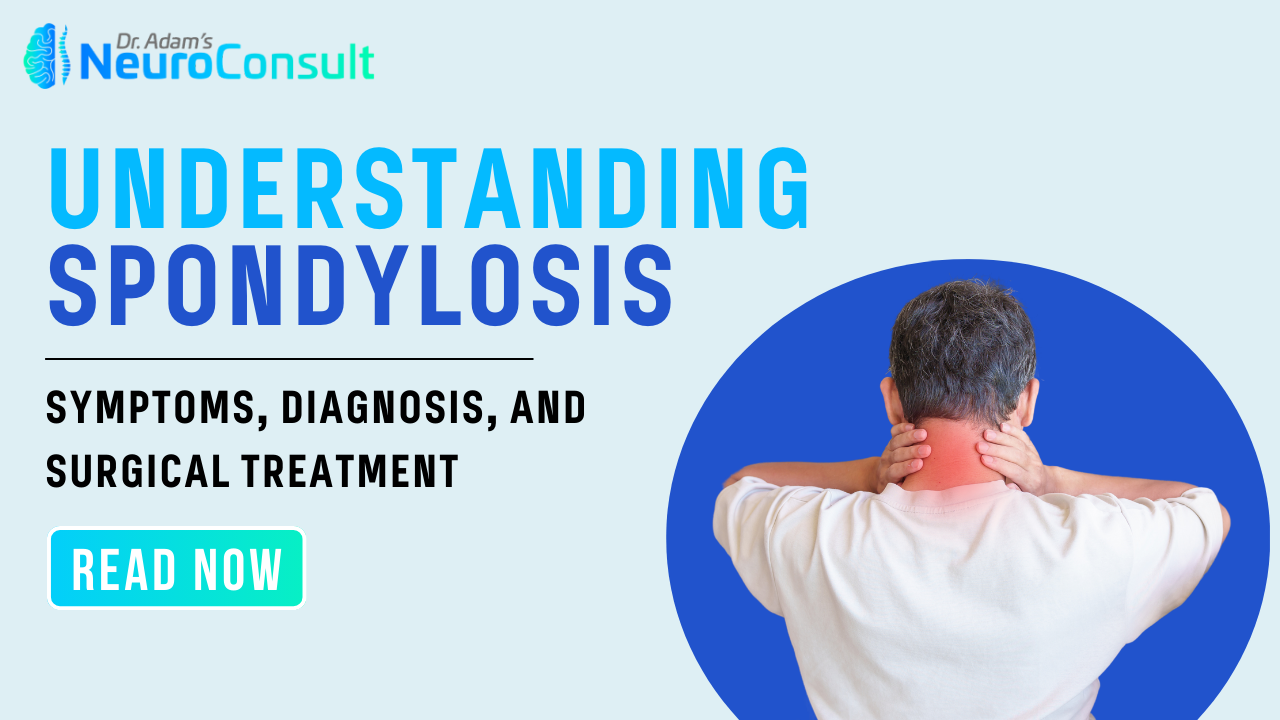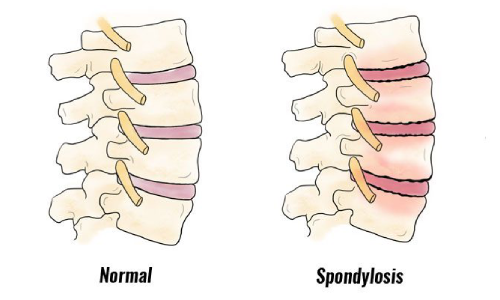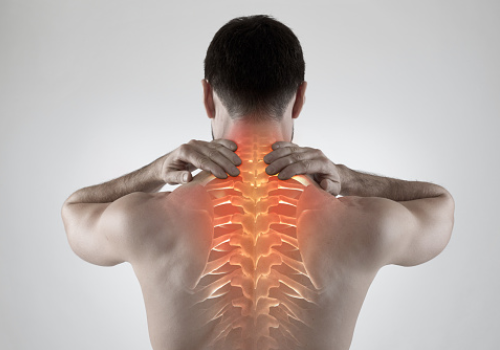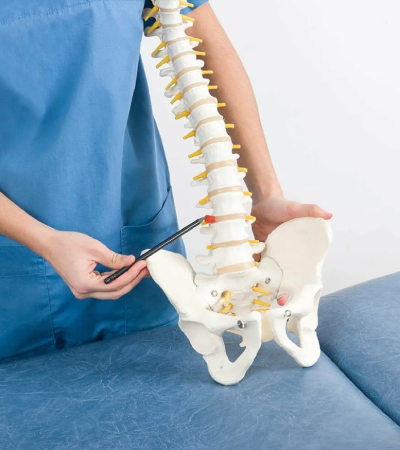
Understanding Spondylosis: Symptoms, Diagnosis, and Surgical Treatment
What is Spondylosis?
Spondylosis is a term that refers to the general wear and tear of the spinal discs and joints, typically associated with aging. It can affect any part of the spine, but it is most commonly found in the neck (cervical spondylosis) and lower back (lumbar spondylosis). This degenerative condition can lead to the development of bone spurs, loss of disc height, and overall spinal stiffness.

Symptoms of Spondylosis
Spondylosis symptoms can vary depending on the affected region of the spine and the severity of the degeneration. Common symptoms include:
-
Pain and Stiffness
Persistent pain in the neck or lower back, especially after long periods of inactivity, is common. The pain may worsen with movement.
-
Numbness or Tingling
Nerve compression due to bone spurs or disc degeneration can cause numbness or tingling sensation in different body parts.
-
Muscle Weakness
Weakness in the muscles of the arms or legs can occur if the nerve roots are compressed.
-
Headaches
Cervical spondylosis can lead to headaches, particularly in the back of the head.
-
Limited Range of Motion
Stiffness in the spine can limit the ability to move or bend comfortably.
Diagnosis of Spondylosis
Diagnosing spondylosis usually involves a combination of medical history, physical examination, and imaging tests. The process may include:
-
Physical Examination
The doctor will analyze the range of motion, reflexes, and muscle strength, and check for any signs of nerve compression.
-
Imaging Tests
X-rays, MRI, or CT scans are often used to visualize the extent of spinal degeneration, the presence of bone spurs, and the condition of the discs and joints.
-
Electromyography (EMG)
This test may be performed to evaluate the electrical activity of the muscles and the function of the nerves.


Surgical Treatment for Spondylosis
Most cases of spondylosis can be managed with non-surgical treatments including physical therapy, medications, or lifestyle modifications. However, if these measures fail to relieve symptoms or if there is significant nerve compression, surgical intervention may be considered. Surgical options include:
- Decompression Surgery: This procedure involves removing bone spurs, herniated discs, or other structures that are compressing the nerves or spinal cord. Laminectomy and foraminotomy are common types of decompression surgeries.
- Spinal Fusion: In cases where instability is a concern, spinal fusion may be performed to fuse two or more vertebrae together, stabilizing the spine and reducing pain.
- Artificial Disc Replacement: In some cases, a damaged disc may be replaced with an artificial one to preserve mobility in the affected segment of the spine.

Dr. Adam Kamrudeen
Neurosurgeon in Navi Mumbai
- MBBS, MS – General Surgery,
- MCh – Neuro Surgery
- Brain & Spine Surgeon in Navi Mumbai
Conclusion
Consulting with Dr. Adam Kamrudeen, a skilled neurosurgeon in Navi Mumbai, is crucial if you're dealing with spondylosis. This degenerative condition of the spine can cause significant pain and mobility issues. Dr. Adam Kamrudeen will assess your condition and explain the surgical and non-surgical treatment options available, including minimally invasive techniques to relieve pain and restore function.
Schedule a consultation with Dr. Adam Kamrudeen to explore the best approach for managing spondylosis and improving your quality of life.
